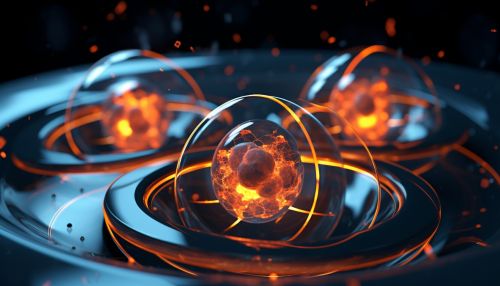Triple-alpha process
Introduction
The Triple-alpha process is a set of nuclear fusion reactions by which three helium-4 nuclei (alpha particles) are transformed into carbon. This process occurs in the dense, hot cores of stars and is responsible for the creation of most of the universe's carbon, a vital element for life as we know it.
Stellar Nucleosynthesis
Stellar nucleosynthesis is the process by which elements are created within stars by combining the protons and neutrons together from the nuclei of lighter elements. All atomic nuclei heavier than hydrogen are the result of stellar nucleosynthesis.
The triple-alpha process is one of many fusion reactions that occur in stars to build the nuclei of the heavier elements. The net result of these reactions is to convert hydrogen, the lightest element, into helium.


The Process
The triple-alpha process involves two helium-4 nuclei (alpha particles) coming together to form beryllium-8, which is highly unstable and will normally immediately break apart again. However, in the extreme temperatures and pressures in a star's core, a third alpha particle can fuse with the beryllium-8 before it breaks apart to form a carbon-12 nucleus.
This process is highly dependent on the temperature and density of the stellar material. It requires extremely high temperatures (approximately 100 million Kelvin) and high densities to proceed. Under these conditions, the rate of triple-alpha reactions is so high that it consumes all the helium in the core within just a few minutes.
Importance in Stellar Evolution
The triple-alpha process plays a key role in stellar evolution. Once a star has exhausted its hydrogen fuel, it begins to contract under its own gravity, causing the core to heat up. When the core temperature reaches around 100 million Kelvin, helium burning via the triple-alpha process begins.
This process is responsible for the formation of carbon, one of the essential elements for life. The carbon produced in this process can then undergo further fusion reactions to produce heavier elements, such as oxygen, neon, and others.
